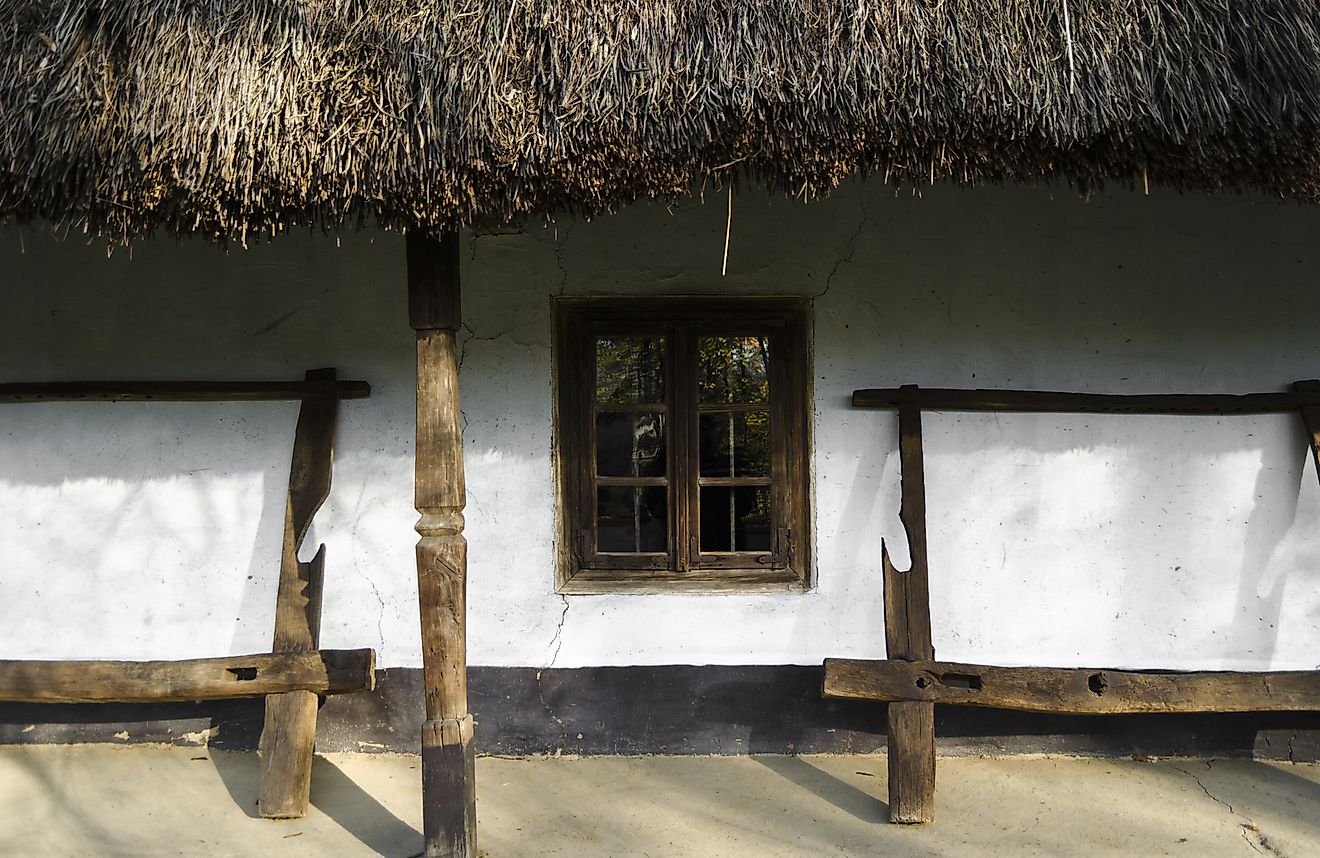The Romanian People - Cultures of the World

5. Description
Romanians, who live in what is today the country of Romania, are said to be descendants of the ancient Dacians who lived in the region and their Roman conquerors. Former Romanian Communist leaders stressed Romanians' Dacian ancestries in order to highlight the uniqueness of their people. They speak Romanian, a Latin-based language in contrast to their Slavic and Finno-Ugric speaking neighbors. In large, the Romanian people identify themselves as adherents of the Greek Orthodox faith. However, the beauty of Romanian people and their culture lies in the diversity of its traditions. The large number of ethnic minorities in the past (Hungarians, Germans, Jews, Serbs, and Bulgarians, among others) contributed to the richness seen in Romanian culture today.
4. Architecture
Romania is historically an agricultural society but, with the rapid industrialization that occurred under communism, people increasingly moved to the cities. Each region has its unique architecture, and the Dimitri Gusti Village Museum in Bucharest displays buildings to represent each ethnographic zone in the country. From the wooden and stone based cottages of Sibiu County in the west, to the thatched roofs and clay houses of Vaslui County in the east, all regions are represented at the rustic village museum. Though during the Communist era block apartments came to dominate the living spaces of many towns and cities, the beautiful medieval and modern castles and monasteries, with their sculptured and hand-painted exteriors, remain European treasures.
3. Cuisine
The diet of the country is varied, but most Romanian households will consider a type of Polenta (akin to corn grits in the US) as their staple dish. This is the famous Mamaliga, which is often served with fresh cow's or sheep's cheese or homemade pork sausages. Sarmale, or cabbage rolls, are also very popular, and a requirement at traditional Romanian weddings, with variations of the dish being seen from region to region. In the Moldova region, for example, they use grape vine leaves stuffed mostly with rice, while in the west cabbage leaves are stuffed with a higher minced pork to rice ratio. Stuffed peppers are a common dish in the country as well, with their insides filled with minced meat, rice, and tomatoes, and often celery as well.
2. Cultural Significance
On the cultural scene, Romanians have contributed to all areas of society, and they prove to have more to offer the world than images of Prince Vlad the Impaler, who was the inspiration for Bram Stoker’s Dracula. Philosophers like Mircea Eliade and Titu Maiorescu contributed to European thought and politics. The sculptures of Constantin Brancusi are found in major foreign museums, from the Washington DC Smithsonian to the Detroit Institute of Art. The Romanian poet Tristian Tzara started the Dada art movement, while playwright Eugene Lonesco’s absurdist plays were made into feature films in the US. The gymnast Nadia Comanenchi remains a renowned figure for her record-breaking perfect score of 10, and her three Olympic gold medals. Recent Romanian films have captured the attention of international critics, marking their impressions throughout the sphere of "New Wave" cinema.
1. Threats
Across their large foreign diaspora, the Romanian community abroad seeks to maintain and protect their culture outside of their home country. This is evidenced by the many Romanian cultural institutes active across the globe today. However, as in all cultures, the traditional skills and crafts inherent to Romanian rural life are slowly being lost, as younger generations flock to the cities. Most no longer learn how to weave the traditional wool blankets or sew the national dress. The exodus of young and old Romanians for employment in Western Europe resulted in negative attitudes towards them, to which Romanians have responded to with creative campaigns to stand their ground and demand respect for their cultural identities.







